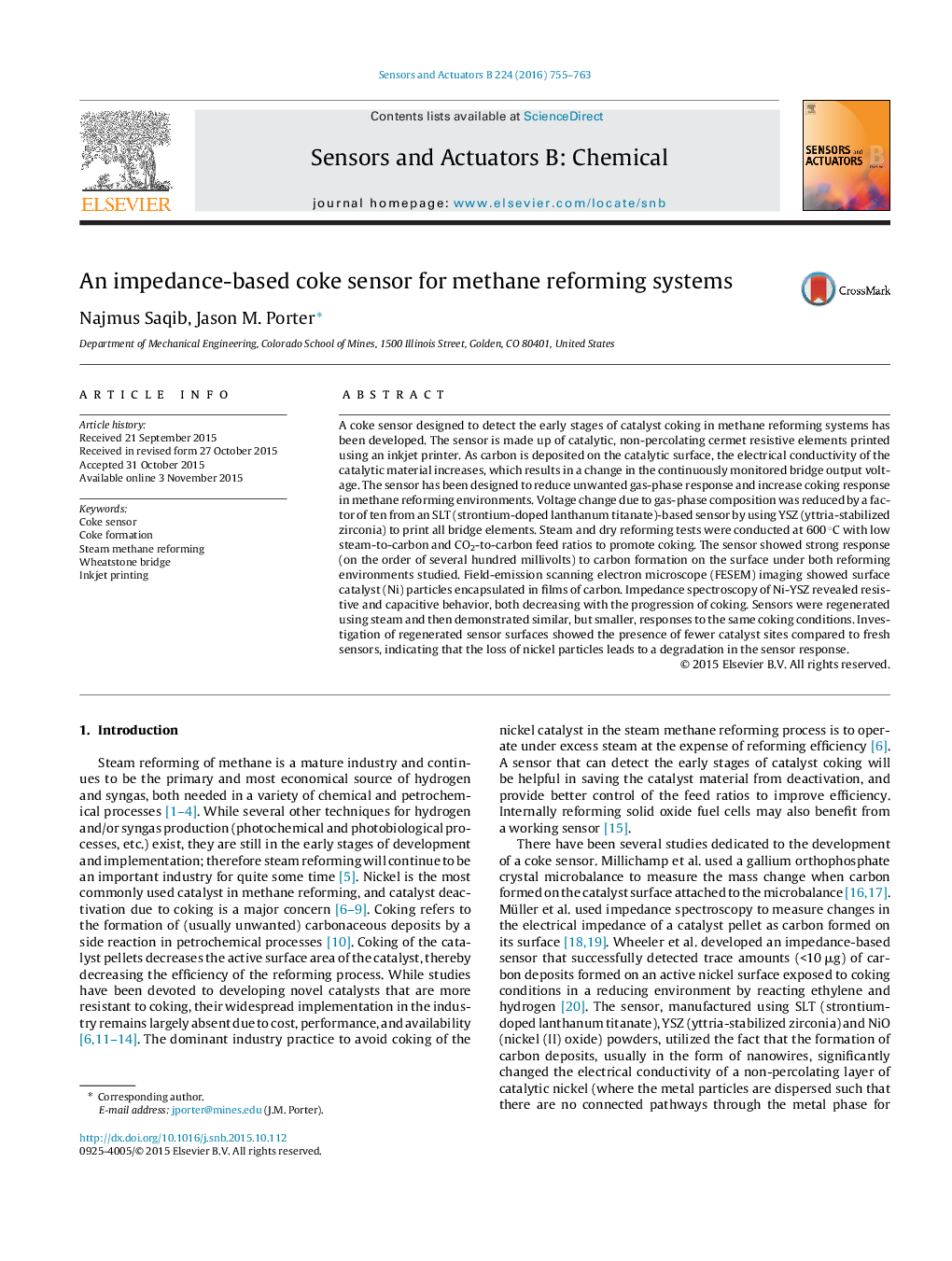| کد مقاله | کد نشریه | سال انتشار | مقاله انگلیسی | نسخه تمام متن |
|---|---|---|---|---|
| 750546 | 1462067 | 2016 | 9 صفحه PDF | دانلود رایگان |
A coke sensor designed to detect the early stages of catalyst coking in methane reforming systems has been developed. The sensor is made up of catalytic, non-percolating cermet resistive elements printed using an inkjet printer. As carbon is deposited on the catalytic surface, the electrical conductivity of the catalytic material increases, which results in a change in the continuously monitored bridge output voltage. The sensor has been designed to reduce unwanted gas-phase response and increase coking response in methane reforming environments. Voltage change due to gas-phase composition was reduced by a factor of ten from an SLT (strontium-doped lanthanum titanate)-based sensor by using YSZ (yttria-stabilized zirconia) to print all bridge elements. Steam and dry reforming tests were conducted at 600 °C with low steam-to-carbon and CO2-to-carbon feed ratios to promote coking. The sensor showed strong response (on the order of several hundred millivolts) to carbon formation on the surface under both reforming environments studied. Field-emission scanning electron microscope (FESEM) imaging showed surface catalyst (Ni) particles encapsulated in films of carbon. Impedance spectroscopy of Ni-YSZ revealed resistive and capacitive behavior, both decreasing with the progression of coking. Sensors were regenerated using steam and then demonstrated similar, but smaller, responses to the same coking conditions. Investigation of regenerated sensor surfaces showed the presence of fewer catalyst sites compared to fresh sensors, indicating that the loss of nickel particles leads to a degradation in the sensor response.
Journal: Sensors and Actuators B: Chemical - Volume 224, 1 March 2016, Pages 755–763
